Identity, Poetic Justice, and Grief Among the Themes in This Year’s Starred Titles | The 2025 Stars Issue
This year, we awarded dozens of books a prestigious star—and among this distinguished group, several clear commonalities shine bright. From fresh approaches on topics like grief to specific recurrences, such as characters taking on another person’s identity, here are the key trends among 2025's starred books.
|
IN THIS ARTICLE The Natural World Assuming Identities The Unique Mental Health Journeys & Neurodivergence How We All Make A Difference: Bird illustrations by
|
If there’s one word to describe 2025 so far, it’s this: chaotic. If there’s a second word, it’s uncertain.
Between the dismantling of the Institute of Museum and Library Services and the back-and-forth on whether tariffs would be implemented on books coming into the United States, it’s impossible to know what will or won’t happen in the world of libraries this year.
But even amid chaos and uncertainty, books are still being published, providing fertile territory for education, enrichment, and enjoyment.
This year, School Library Journal awarded dozens of books a prestigious star. These stars shine brightly, showcasing a range of themes, from fresh approaches on topics like grief to specific commonalities, such as characters who take on another person’s identity.
POETIC JUSTICE
Poetry and verse stand out this year because of how intentionally a writer must exercise an economy of words in telling an emotionally engaging story.
For the youngest readers, And She Was Loved: Toni Morrison’sLife in Stories, by Andrea Davis Pinkney with illustrations by Daniel Minter (Little, Brown), brings readers into the life of the beloved author. The marriage of verse and vibrant art showcases not only Morrison’s storied career but also the careers of other Black literary legends she helped publish. Black Boy, Rise, by Brynne Barnes with illustrations by Bryan Collier (Chronicle), presents the joys of Black boyhood through lyrical text inspired by Black creatives like Langston Hughes and Lucille Clifton. These two stellar picture books also touch upon another of this year’s themes: the past, present, and future of Black, Indigenous, and people of color excellence.
Words with Wings and Magic Things, written by Matthew Burgess and illustrated by Doug Salati (Tundra), offers poems that showcase the beauty of wordplay. Using poetry to explore the history of music—specifically Black music—is a natural pairing in Kwame Alexander’s How Sweet the Sound, illustrated by Charly Palmer (Little, Brown).
Verse novels abound in the middle grade and young adult spaces. The format invites an array of themes and topics, including the nature of change, as in Padma Venkatraman’s Safe Harbor(Penguin/Nancy Paulsen) and cultural heritage, racism, and colorism in Ibi Zoboi’s (S)Kin (Clarion/Versify). Marcie Flinchum Atkins’s verse grounds readers in the historical fight for the 19th Amendment in One Step Forward (Clarion/Versify), fictionalizing the real-life suffragist Matilda Young.
Verse isn’t the only unique form in this year’s starred books. Told in the epistolary format, The Anxious Exile of Sara Salt, by Gabrielle Prendergast (Orca), follows a young girl navigating a significant transition; her story unfolds in letters written to her newborn brother. Joy McCullough’s historical work Everything Is Poison (Dutton) uses verse interstitials to give tertiary characters a voice, while Mahogany L. Browne’s A Bird in the Air Means We Can Still Breathe (Crown) weaves together verse, prose, and short stories to highlight the different experiences of marginalized people during the COVID-19 lockdown in New York City.
Two more of the best mixed-media YA novels include The House No One Sees, by Adina King (Feiwel & Friends), and Hyo the Hellmaker, by Mina Ikemoto Ghosh (Scholastic), a book that incorporates illustrations within its prose in a way that creates something that’s not quite a traditional novel and not quite a graphic novel, but uniquely its own.
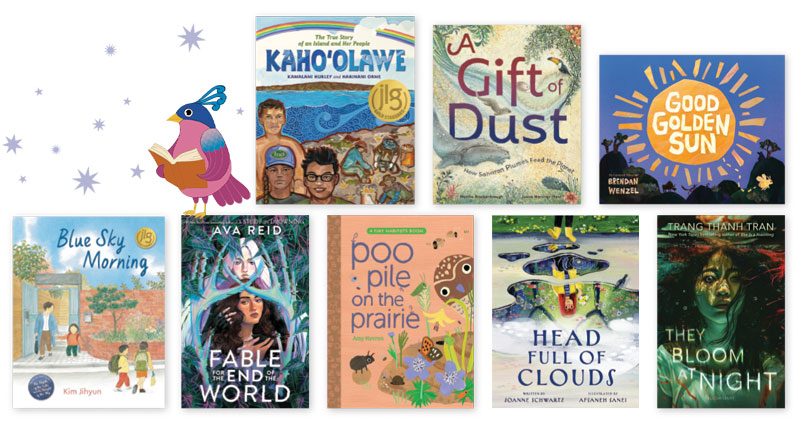
THE NATURAL WORLD
Over the last several years, we’ve seen climate change and conservation as big themes, and both appear in this year’s starred reviews as well. Kaho ‘olawe: The True Story of an Island and Her People, written by Kamalani Hurley and illustrated by Harinani Orme (Lerner), explores the ways in which humans contributed to the destruction of the small Pacific island through war. Ava Reid’s Fable for the End of the World (HarperCollins) takes readers into a near-future dystopia where capitalism and the consequences of technological growth have wrought devastating climate change, while Trang Thanh Tran delivers chilling ecological change in the Southern United States with They Bloom at Night (Bloomsbury).
One stand-out aspect of nature in 2025’s starred reviews: how extraordinary the cycles of the natural world truly are. Brendan Wenzel shines a light on how the sun’s energy fuels life on Earth in Good Golden Sun (Little, Brown), while Blue Sky Morning by Jihyun Kim (Floris) explores the joy and beauty experienced by a young girl on an ordinary autumn day. Head Full of Clouds, written by Joanne Schwartz and illustrated by Afsaneh Sanei (Tundra), marries the human sensory experience with the natural world’s cycles.
Readers learn about the importance of dust to the planet in A Gift of Dust: How Saharan Plumes Feed the Planet, by Martha Brockenbrough with illustrations by Juana Martinez-Neal (Knopf), and about the ecological vitality of poop in Amy Hevron’s Poo Pile on the Prairie (S. & S./Beach Lane).
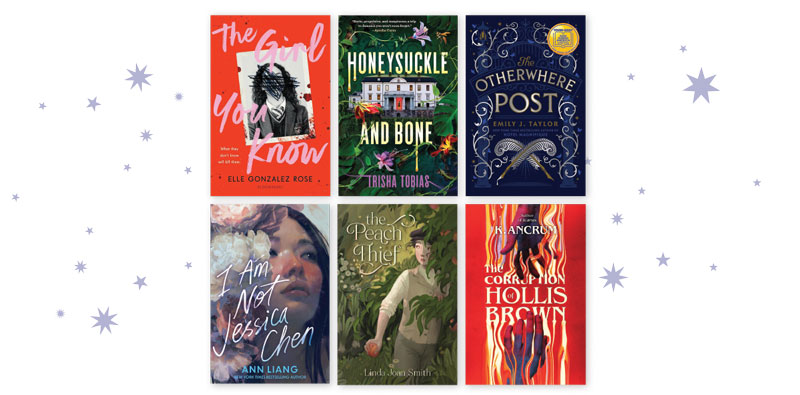
Who Are We, Really? ASSUMING IDENTITIES
A curious theme in this year’s starred reviews? What happens when a person takes on the identity of another, whether by choice, by force, or by accident.
When her twin sister is murdered, the protagonist in The Girl You Know by Elle Gonzalez Rose (Bloomsbury) goes to her sister’s boarding school pretending to be her to sniff out who may have been behind the crime. She soon learns that many of the people in her sister’s life are far from who they seem to be. Trisha Tobias’s Honeysuckle and Bone (Zando) takes us to Jamaica alongside an 18-year-old girl desperate for a fresh start. But how fresh is the start when you’re showing up for an au pair job pretending to be your best friend and not yourself?
In a twist on Freaky Friday, Ann Liang’s I Am Not Jessica Chen (HarperCollins) tells the story of Jenna, a girl always in the shadow of her perfect cousin Jessica. When Jenna gets her wish to trade places with Jessica, she learns that her cousin’s life isn’t all easy and great. Maeve takes on an assumed identity to escape her father’s legacy in Emily J. Taylor’s The Otherwhere Post (Putnam). And when Scilla Brown, an orphan working in an 1850s England workhouse, is caught trying to steal a peach from a local garden, she’s mistaken for a young boy and finds that playing the role of a boy opens up a whole new world in The Peach Thief, by Linda Joan Smith (Candlewick).
K. Ancrum brings perhaps the oddest—and most romantic—story of identity melding with The Corruption of Hollis Brown (HarperCollins). When impoverished Hollis Brown accepts forever being stuck in his small town, his life is turned upside down when a boy he meets at a party attaches his soul to Hollis’s body.
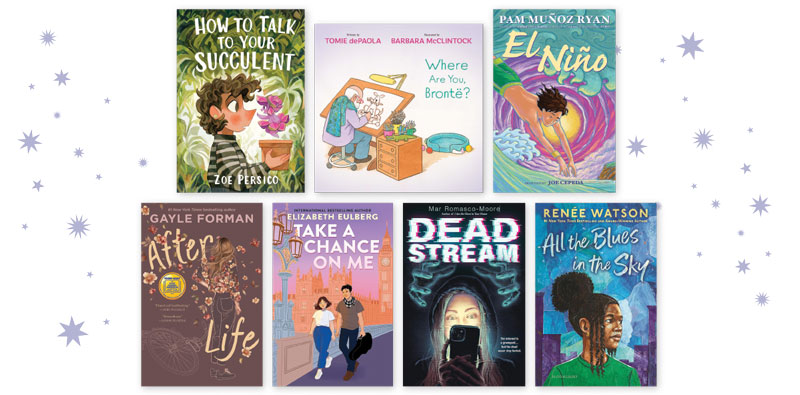
Back to the top
THE UNIQUE CONTOURS OF GRIEF
Loss is all-consuming, and humans build relationships with their grief. In How to Talk to Your Succulent by Zoe Persico (Tundra), Adara finds solace through the magic of plants. For Kai in Pam Muñoz Ryan’s El Niño (Scholastic),swimming allows him to fully immerse himself in the loss of his sister and navigate his feelings about never living up to his family’s expectations. Beloved children’s author Tomie dePaola’s final manuscript, Where Are You, Brontë?, illustrated by Barbara McClintock (S. & S.), is a moving story about how, even after a pet dies, their memory remains.
The loss of a friend plays a prominent role in several of this year’s stellar books, too. All the Blues in the Sky, by Renée Watson (Bloomsbury), uses verse to take readers into Sage’s experience of losing her best friend in a hit-and-run accident. And readers watch Teresa wall herself off from the real world while grieving the death of her best friend in Mar Romasco-Moore’s Deadstream (Viking). Evie grapples with her life being up-ended in Elizabeth Eulberg’s Take a Chance on Me (Scholastic), a reminder that grief isn’t limited to death. Gayle Forman’s After Life (HarperCollins) deserves mention for its deft exploration of what happens in the weeks, months, and years after the death of a loved one.
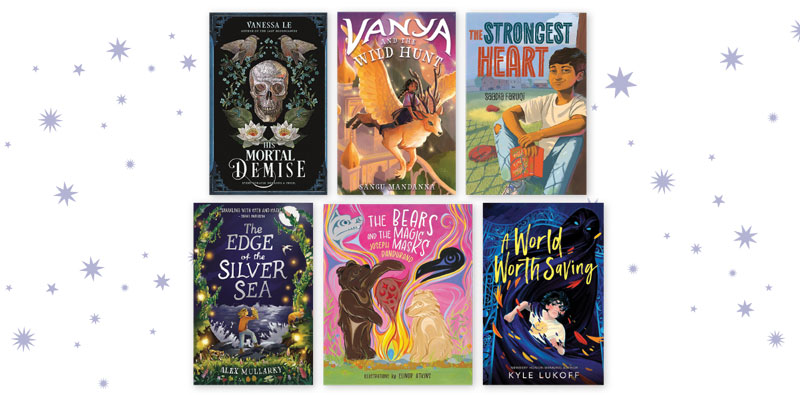
GLOBAL FOLKLORE & MYTHOLOGY
The breadth of stories young readers have access to is more inclusive than it was even 10 years ago. That’s thanks in no small part to We Need Diverse Books and an industry that has slowly begun to better reflect the expansive world in which we live. But if there is one thing that has emerged in this year’s starred reviews, it’s the range of global folklore, folktales, and mythology.
We return to a nail-biting world inspired by Vietnamese folklore in His Mortal Demise by Vanessa Le (Roaring Brook), the second book of a duology. The Bears and the Magic Masks, written by Joseph Dandurand and illustrated by Elinor Atkins (Nightwood Editions), explores the powerful relationship between the First Nations Kwantlen people and bears.
The Jewish myth of the golem is central to A World Worth Savingby Kyle Lukoff (Dial), in which young queer tweens and teens are forced into a conversion support group. What happens when the attendees discover the group is run by an actual monster? The answer is an action-packed subversion of common hero tropes. Southeast Asian mythological beings provide solace to Vanya, the neurodivergent tween feeling out of place in Sangu Mandanna’s Vanya and the Wild Hunt (Roaring Brook), and to Mo, who lives with a parent struggling with mental health issues in Saadia Faruqi’s The Strongest Heart (HarperCollins/Quill Tree). Finally, readers meet Cailleach, the Gaelic wise crone, in The Edge of the Silver Sea by Alex Mullarky (Floris).
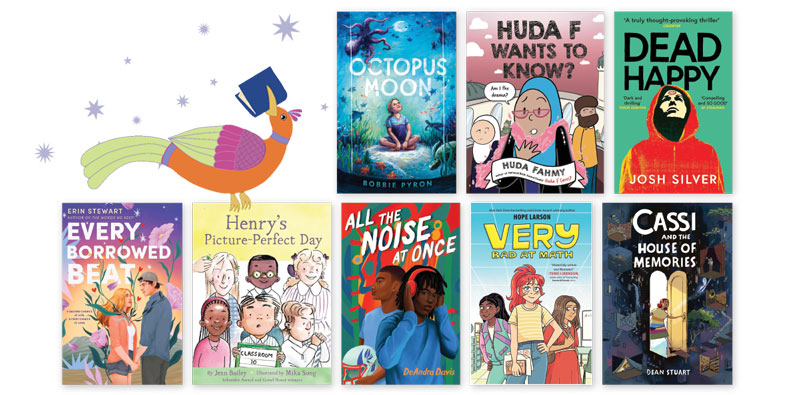
MENTAL HEALTH JOURNEYS & NEURODIVERGENCE
The wide range of experiences involving mental health and cognitive capacities are on full display this year.
In the third book of her fictionalized memoir, Huda Fahmy addresses mental health and its associated stigmas in Huda F Wants to Know? (Dial).Heroine Huda not only learns how to navigate life-altering personal news but brings humor, heart, and sensitivity to the ways mental health is—and is not—addressed in Muslim culture. Mental health and eugenics thread through the second installment of Josh Silver’s duology, Dead Happy (Delacorte), while readers explore how physical illnesses directly impact mental health in Erin Stewart’s Every Borrowed Beat (Delacorte).
For younger readers, Bobbie Pyron’s Octopus Moon (Penguin/Nancy Paulsen) presents a young girl understanding that the anxiety she feels every day is not normal. A supportive family and therapy help build Pearl’s coping toolkit.
Jenn Bailey and illustrator Mika Song open a window onto the experiences of an autistic boy in Henry’s Picture-Perfect Day (Chronicle), where nothing goes right for the titular character on what should be an exciting school day. Racism, prejudice, and a moving brotherly bond intertwine in DeAndra Davis’s All the Noise at Once (S. & S.), featuring a Black autistic teen.
In Cassi and the House of Memories,by Dean Stuart (Viking), readers watch alongside Cassi as her beloved grandfather experiences the early effects of dementia. Verity Nelson, popular student body president of her eighth grade class, struggles endlessly with math in Hope Larson’s Very Bad at Math (HarperAlley). The book presents a thoughtful look at dyscalculia.
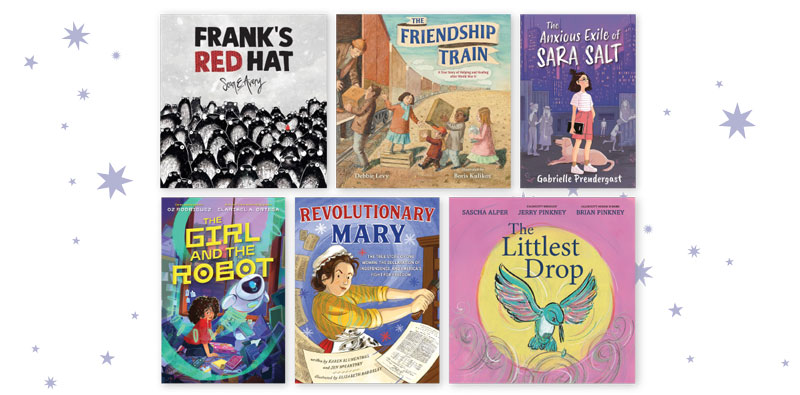
HOW WE ALL MAKE A DIFFERENCE
No Matter Our Size
Over the last several years, we’ve seen plenty of excellent books explore advocacy and activism. This year is no different, with books showing that no person is too small and no action too insignificant to create change.
Every idea begins with a sense of determination. That’s what we see in the delightful Frank’s Red Hat, written and illustrated by Sean E. Avery (Walker Australia). Frank, a penguin, is tired of seeing his world only in black-and-white. To color things up, he encourages his fellow birds to don more red hats. It’s a powerful message that change starts small—and is not always popular.
Gabrielle Prendergast’s The Anxious Exile of Sara Salt (Orca) showcases a young, selectively mute girl eager to find her voice through activism as she meets members of the local unhoused community. In The Girl and the Robot, by Oz Rodriguez and Claribel A. Ortega (Disney-Hyperion), Mimi pours her heart into a local robotics contest to win cash that will help with the legal costs of overturning her father’s deportation. Mimi also helps a lost robot make its way back home, underlining the book’s themes of immigration and asylum.
Readers meet activists through history, too. Revolutionary Mary: The True Story of One Woman, the Declaration of Independence, and America’s Fight for Freedom by Karen Blumenthal and Jen McCartney with illustrations by Elizabeth Baddeley (Roaring Brook) is the story of Mary Katharine Goddard, real-life champion of the free press, who published the Declaration of Independence. Drew Pearson’s idea to deliver food from the U.S. to France and Italy following World War II in The Friendship Train: A True Story of Helping and Healing After World War II, written by Debbie Levy and illustrated by Boris Kulikov (Bloomsbury), reminds us that every person can help better the world.
The reality is that advocacy and activism take hard work, which can feel endless and thankless. That’s where community comes in. We see that in The Littlest Drop, by Sascha Alper, illustrated by Jerry Pinkney and Brian Pinkney (Random/Anne Schwartz). While a hummingbird can try to put out a roaring wildfire, it is the help of a diverse community that truly stomps out the flames. Collective effort makes a difference.
We can’t control the chaos around us—or the uncertain future. But we can and should advocate relentlessly for libraries and the array of people who use them. One way we can do this is through not only reading incredible books but also championing these titles to ensure they reach those who most deserve them and need them, and those who will be most moved.
Back to the top
RELATED
The job outlook in 2030: Librarians will be in demand
The job outlook in 2030: Librarians will be in demand
ALREADY A SUBSCRIBER? LOG IN
We are currently offering this content for free. Sign up now to activate your personal profile, where you can save articles for future viewing


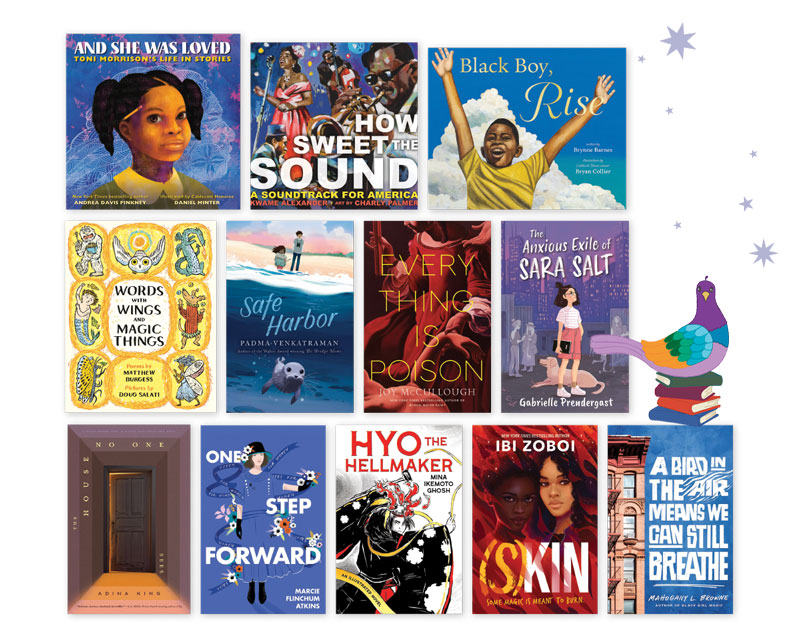
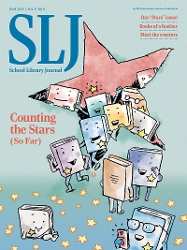




Add Comment :-
Be the first reader to comment.
Comment Policy:
Comment should not be empty !!!